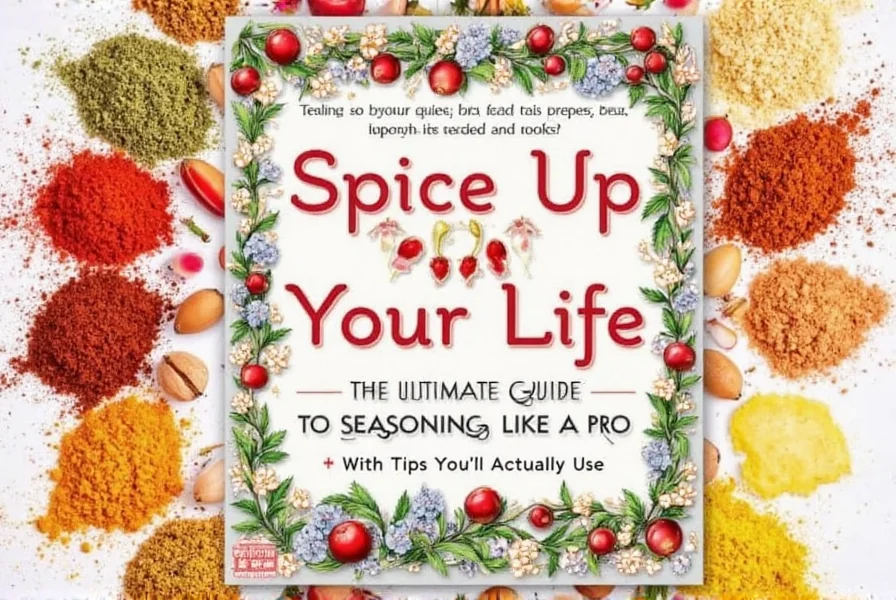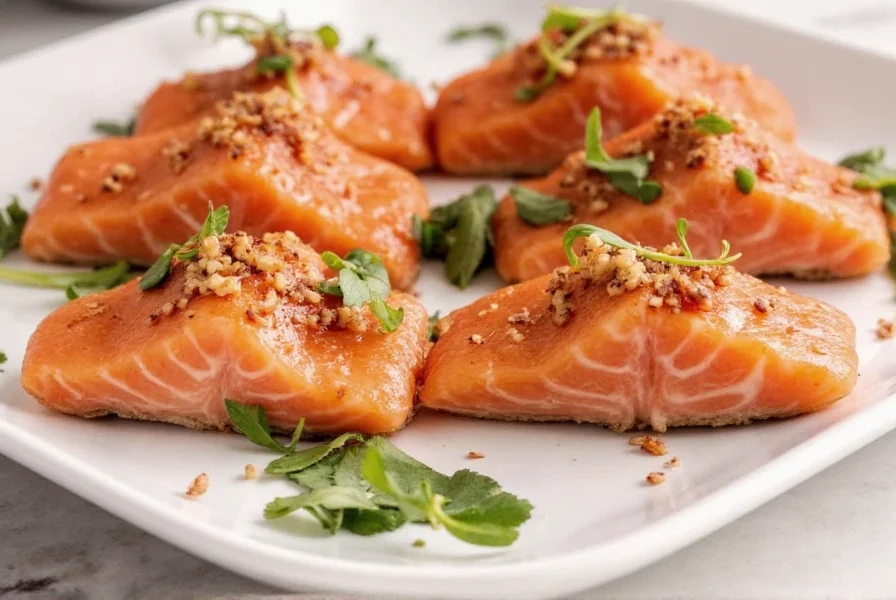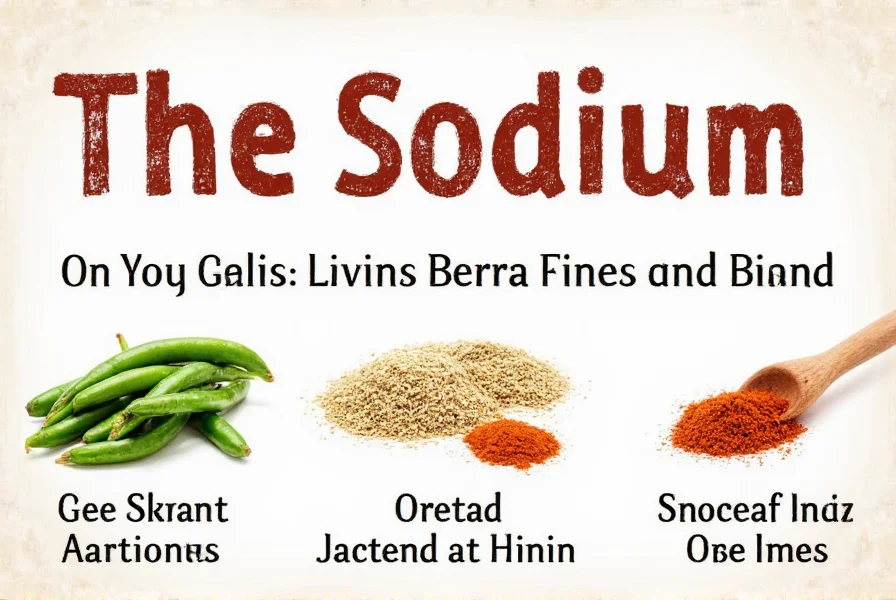Reducing sodium intake is essential for maintaining heart health and preventing hypertension. According to the Centers for Disease Control and Prevention (CDC), the average American consumes over 3,400mg of sodium daily, far exceeding the recommended limit of 2,300mg. The good news is that you can enjoy flavorful meals without excess salt by implementing these science-backed strategies.
Strategy #1: Boost Flavor with Herbs and Spices
Salt is often used as a default flavor booster. But what if we told you that herbs and spices could do the job better — without the water retention?
- Black Pepper: Adds heat and depth
- Cumin: Earthy richness for soups and stews
- Smoked Paprika: Sweet smokiness that tricks the brain into thinking it's salty
- Lemon Zest: Brightens up any dish naturally
Pro Tip: Create a 'salt-free seasoning station' in your kitchen so you don't even miss the shaker.

Strategy #2: Smart Salt Substitutions for Everyday Cooking
| Salty Ingredient | Low Sodium Swap | Flavor Benefit |
|---|---|---|
| Garlic Salt | Fresh Garlic + Lemon Juice | Bold, zesty kick |
| Onion Salt | Dried Onion Flakes + Vinegar | Umami boost without the sodium |
| Celery Salt | Celery Seed + Lime Zest | Crunchy freshness, minus the salt |
Strategy #3: Create DIY Flavor Bombs for Consistent Taste
These are little bundles of umami magic. Mix herbs, oil, and citrus zest into small balls and freeze them. Use them to jazz up soups, pastas, or grilled meats without adding salt.
Recipe:
- 1 cup fresh herbs (parsley, cilantro, thyme)
- 1/4 cup olive oil
- Zest of 1 lemon or lime
- 1 clove garlic (optional)
Blend everything together and freeze in ice cube trays. Pop one into your dish whenever you want a flavor explosion.

Strategy #4: Proper Storage for Maximum Spice Potency
Spices lose potency over time. Here's how to keep them strong and flavorful:
- Airtight Containers: Keep out moisture and light
- Cool, Dark Places: Avoid heat sources like stoves
- Label Everything: So you don't accidentally use cayenne instead of cinnamon again

Strategy #5: Meal Prep Without Excess Sodium
Prepping meals ahead is a great way to stay low sodium. Here's how to do it right:
- Use homemade spice blends instead of store-bought seasoning packets
- Make extra roasted veggies or grains seasoned with herbs
- Pickle or ferment vegetables to add tangy flavor without salt
Strategy #6: Reading Nutrition Labels Like a Pro
Many processed foods hide sodium under names like "sodium benzoate" or "monosodium glutamate." Here's what to watch for:
| Hidden Salt Name | What It Is | Low Sodium Alternative |
|---|---|---|
| Sodium Benzoate | Preservative | Vinegar or citric acid |
| Monosodium Glutamate (MSG) | Flavor enhancer | Mushroom powder or seaweed flakes |
| Disodium Inosinate | Umami booster | Tamari or fermented black beans |

Context Boundaries: Where Salt Substitutes Work (and Where They Don't)
Not all sodium reduction methods apply universally. Research shows effectiveness varies significantly by cooking context:
| Cooking Scenario | Recommended Approach | Key Limitation |
|---|---|---|
| Bread Baking | Reduce salt by 25-50% max | Exceeding 50% reduction compromises gluten development and yeast control (Source: King Arthur Baking Science) |
| Fermented Vegetables | Maintain minimum 2% salt concentration | Below 2% risks pathogenic bacteria growth during fermentation (Source: National Center for Home Food Preservation) |
| Commercial Canning | Never reduce salt in tested recipes | Salt is critical for safety in low-acid canned goods per FDA standards |
Strategy #7: Fermentation for Natural Flavor Enhancement
Fermented foods like kimchi, sauerkraut, and pickled vegetables deliver big flavor with minimal salt.
You can make your own low sodium versions at home using brine ratios like 1% salt (about 1 teaspoon per quart of water).
- Kombucha adds fizz and acidity
- Low-salt miso brings depth to broths
- Homemade pickles with apple cider vinegar = crispy + tangy
Sodium Reduction Timeline: Taste Bud Adaptation Process
Longitudinal studies reveal predictable physiological changes during sodium reduction. The American Heart Association's clinical observations show:
| Time Period | Physiological Change | Flavor Perception Shift |
|---|---|---|
| Days 1-7 | Initial sodium craving response | Low-sodium foods taste bland; processed foods taste excessively salty |
| Weeks 2-4 | Renin-angiotensin system recalibration | Herbal notes become more pronounced; natural food flavors intensify |
| Weeks 5-8 | Complete taste receptor adaptation | Previously acceptable foods taste oversalted; preference shifts permanently (Source: Hypertension Journal, 2017) |
Buying Guide: Top-Rated Sodium-Free Spice Blends
| Product | Key Features | Best For | Price Range |
|---|---|---|---|
| Simply Organic Salt-Free Italian Seasoning | Herb-forward blend with basil, oregano, and thyme | Pasta sauces, bread dips, and marinades | $8–$10 |
| Badia Salt-Free Adobo | Puerto Rican-inspired mix with garlic, pepper, and herbs | Rice dishes, grilled chicken, and stews | $6–$9 |
| The Spice Lab No-Salt Cajun Blend | Smoky, spicy, and packed with paprika and onion powder | Gumbo, seafood, and grilled corn | $7–$12 |
Conclusion: Embrace a Heart-Healthy Low Sodium Lifestyle
Reducing sodium intake doesn't mean boring food — it means exploring a whole new world of flavor. Whether you're experimenting with fermentation, creating your own spice blends, or just being smarter about storage, there are countless delicious ways to reduce your salt intake while supporting heart health.
Important: Always consult with your healthcare provider before making significant dietary changes, especially if you have existing health conditions like hypertension or kidney disease.
Frequently Asked Questions About Low Sodium Cooking
How much sodium should I actually be eating per day?
The American Heart Association and CDC recommend no more than 2,300mg of sodium per day (about 1 teaspoon of salt), with an ideal limit of 1,500mg for most adults, especially those with hypertension. The average American consumes about 3,400mg daily, well above recommended levels.
How long does it take to adjust to a low sodium diet?
Most people adapt to a lower sodium diet within 6-8 weeks. Your taste buds will recalibrate, and previously 'normal' salty foods will start to taste overly salty. Using the spice strategies mentioned in this article can make the transition much smoother and more enjoyable.
Can I still eat out at restaurants while following a low sodium diet?
Yes, but you'll need to be strategic. Request dishes prepared without added salt, ask for dressings and sauces on the side, and choose grilled proteins with vegetable sides. Many restaurants are accommodating to dietary restrictions if you explain your health needs. Focus on asking for herbs, citrus, and vinegar-based preparations instead of salt.
What are the best salt substitutes for baking?
Baking is challenging since salt plays a functional role in yeast activation and flavor balance. For breads, try reducing salt by 25-50% rather than eliminating it completely. For sweet baked goods, you can usually eliminate salt entirely without issues. Try adding a pinch of cinnamon or cardamom to replace the flavor dimension salt would provide.
Will reducing sodium affect my athletic performance?
For most recreational athletes, reducing sodium won't negatively impact performance. However, endurance athletes training for more than 90 minutes in hot conditions may need to be mindful of electrolyte balance. In these cases, consider natural electrolyte sources like coconut water or small amounts of pickle juice rather than salty sports drinks.
How can I make soups flavorful without salt?
Build flavor from the start with sautéed aromatics (onions, garlic, celery), use homemade broth, add umami-rich ingredients like mushrooms or tomato paste, include dried mushrooms, and finish with acid (lemon juice or vinegar). Our DIY flavor bombs (Strategy #3) work perfectly in soups too!
Are there any risks to reducing sodium too much?
For most people, moderately reducing sodium is safe and beneficial. However, extremely low sodium intake (below 1,500mg daily for extended periods) may cause issues for some individuals, particularly those with certain medical conditions. Always consult with your healthcare provider about your specific sodium needs, especially if you have kidney issues or are on certain medications.










 浙公网安备
33010002000092号
浙公网安备
33010002000092号 浙B2-20120091-4
浙B2-20120091-4